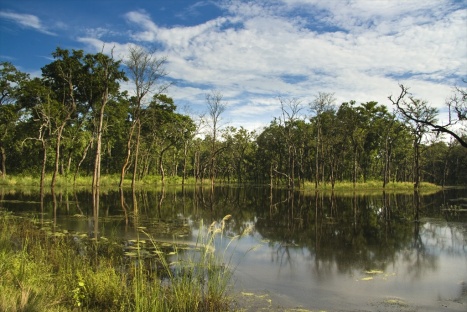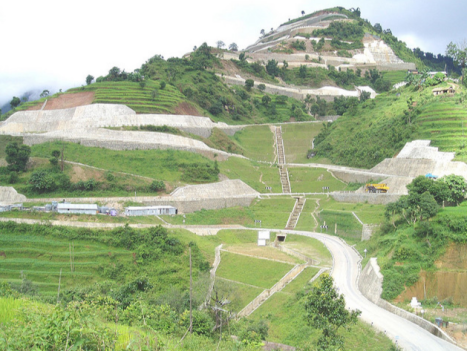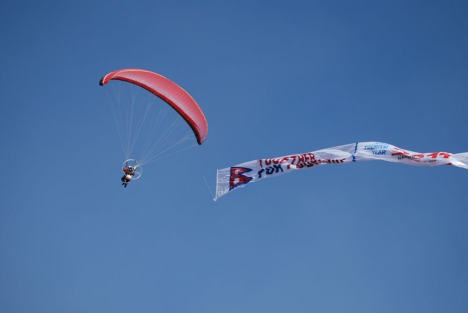Nepal , About Nepal And Information About Nepal
About Nepal
Learn About Nepal
Discription:
Nepal is a landlocked country in South Asia, sandwiched between India and China. It is situated in the lap of the beautiful snow-capped Himalayas and is home to the world’s highest peak – Mount Everest.In addition to the Himalayas, the topography of Nepal also houses the ‘Hills’ and the ‘Tarai’ or the plains. While the Himalayas cover approximately 15% of Nepal, the Hills and the Tarai make up for 65% and18% of Nepal respectively.
Unfortunately the Hills have been subject to an increasing number of environmental disasters, which are due in likelihood to deforestation and intensive farming.
Kathmandu is the capital of Nepal and is a valley surrounded by hills. It is also one of the 75 districts of Nepal and falls within the Central Development Region of Nepal. Nepal has been divided to five developmental regions namely, Far-Western, Mid-Western, Western, Central and Eastern.
Nepal is the 48th poorest country in the world with a population of 28,901,790. (UNICEF 2007)
Half of Nepal’s population lives below the poverty line, and about one third of the population live without clear water. These are people who do not have access to basic needs such as food, health and education. Half the population is jobless in Nepal. Most Nepalese live on a $1 day or less. Average income of Nepal is less than $200 a year. About 15% of the Nepalese have access to health services. Most of the poor people live in rural areas yet still a huge percentage of poor people struggle in cities trying to make ends meet. About 80% of Nepalese are farmers and are dependent on agriculture for livelihood.
For almost ten years Nepal between 1996-2006, Nepal underwent a violent conflict between government forces and an insurgent group called Maoists. The conflict claimed more than 13,000 lives and caused thousands of disappeared—those who were abducted or killed without a trace and whose fates are still unknown to their families. Amidst all this, children and women have suffered the most.
After a peace accord was signed in 2006 between the government and the Maoists, the Maoists entered mainstream politics and also won the majority of the seats in the historic Constituent Assembly polls held on the 10th of April 2008. Nepal has also been declared a secular state under the Interim Constitution, which was promulgated on January 15, 2007. The government took positive preliminary steps with respect to religious freedom and government policy contributed to the generally free practice of religion replacing the age-old term ‘Hindu Kingdom of Nepal’.
The Maoists had insisted on the abolition of the monarchy and the removal of Gyanendra Bir Bikram Shah Dev as King with Nepal becoming a federal democratic state with an elected head of state. The newly-elected Assembly met in the Nepal’s Capital Kathmandu on May 28, 2008 and abolished the monarchy that had reigned for 240 years. There was polling of Constituent Assembly (CA) members and out of a total of 564 Assembly members, 560 voted to end Nepal’s monarchical rule. The proposal declared that Nepal had become an independent, indivisible, sovereign, and secular and an inclusive democratic republic.
On 19 July 2008, two months after the departure of King Gyanendra, Dr. Ram Baran Yadav of Nepali Congress was elected as Nepal’s first president and Parmanand Jha of Madhesi People’s Right Forum (MPRF) was elected the vice president by winning the majority votes of CA members.
Nepal is now recovering from its past wounds of conflict and massive underdevelopment. The development sector needs to gear up if Nepal is to achieve it’s Millennium Development Goals. Twenty-eight percent of Nepalese primary school age children are not at school, and of these the majority are girls. Only 50 percent of students starting grade one reach grade five. In Nepal, challenges such as poverty, shortages of schools and teachers in isolated areas, high dropout rates in primary school, low enrolment in secondary school and poor facilities preclude children from receiving education.
Among adults, the overall literacy rate is around 57%. A little less than a quarter of women can read and write. Lack of education, skills, or business training makes it hard for people to feed and support their families.
Each year, in Nepal, more than 50,000 children die with malnutrition as the underlying cause for more than 60 per cent of these deaths. Half of the children are underweight and three fourths of the pregnant women are anemic.
Maternal mortality rates are high due to weak health systems with limited access to emergency obstetric care, skilled attendance and the overall poor status of women. Neonatal mortality rates are also unacceptably high due in part to lack of community awareness in appropriate care for the newborn.
Despite Nepal’s high overall coverage of accessibility to drinking water, access to improved water for deprived, disadvantaged communities and conflict-affected rural and fringe urban areas remains low. Two-thirds of Nepalese are still without access to toilets.
The HIV and AIDS epidemic poses a serious threat to the population of Nepal, especially the lives of children and young people. It is estimated that around 75,000 people are infected with the virus, a quarter of them women. Traditional high-risk groups include injecting drug users, sex workers and migrant or transport labourers but there are emerging new high-risk groups such as spouses of migrant workers. Nepal’s low education, literacy and health knowledge, especially for women, makes it an ideal breeding ground for HIV-AIDS unless ways are found to communicate its dangers throughout the country.
Nepal’s Most Dream Destinations to Visit: Nepal
Facebook, a great way to meet friends and keep up on what they are doing and updating .It has been a very vastly cherished social network. We AceTravels.com got more than 20,000 fans in this network and this phenomenon is going rapidly. Keeping the theme of promoting Nepal Tourism Year 2011. We have posted many fine destinations to visit within Nepal and the mostly visited places by our fans are:
Antu Danda-Ilam
Antu Danda, Illam
Antu Danda is located in the Eastern part of Nepal and is one of the highly potential places for tourism. It is delimited by captivating views with greenery tea plantation. Antu Danda is also the best destination to view the scenic sunrise and sunset.
It is situated at an altitude of 1,677m in Ilam district and is famous for the splendid views of Mt. Everest and Mt. Kanchenjunga that it commands. Another must to be viewed place is the Lepcha museum at Aantu. Illam reflects affluent cultural and social heritages of people living in concord.
Solukhumbu
Saleri - Solu Kumbhu
A place with very incredible discovery is with high Altitude the ‘Solukhumbu ‘starting from Jiri which end on Lukla. The Solukhumbu area is divided into two distinct regions, Solu and Khumbu.Most of the tourists trek from Salleri or Jiri to Lukla or in the reverse direction. In Khumbu, many tourist routes are used extensively to trek into the Everest region, but some new alternate trails can also be explored. The most visiting place in this region are Sagarmatha National Park, Mt. Everest, Pikey Peak Trek, Thuptenchholing Monastery, Dudh Kunda- Khaling Rai Trek, Thuptenchholing Monastery and many others.
Khotang-Diktel
Diktel, Capital of Khotang district
Khotang District is one of the large districts of Sagarmatha Zone. It is situated in Eastern Nepal where Diktel is a district headquarters. It is situated in the North-East of Khotang District. It is a remote place but in nature a very beautiful where we can view the natural landscape and inhale natural air. Diktel bazaar is one of the busiest places of Khotang. Diktel-Khotang is the second major strategic centre of the hilly areas after Dhankuta in eastern Nepal.
Muktinath & Jomsom
Muktinath temple
It is believed that all miseries/sorrows are relieved once you visit this temple Muktinath (Mukti=Nirvana, Nath=God). The famous temple of Lord Muktinath lies in the district of Mustang and is situated about 18km northeast of Jomsom at an altitude of about 3,749m. Muktinath is an important pilgrimage place for both Hindu & Buddhist. The holy shrine at Muktinath is in a grove of trees and includes a Buddhist Gompa and the pagoda style temple of Vishnu Temple, Containing an Image of Vishnu. Many best places to visit in this region are the Kunda, Mukti Dhara, Jwala Mai Temple, Gomba Samba, a “newly built monastery”. Another attraction for the pilgrimage is the River kali Gandaki from where one can collect fossils too.
Tansen – Palpa
Rani mahal-Palpa
It is a part of western Nepal. Situated at an altitude of 1,343m, Tansen is the most popular summer resort in western Nepal on account of its position and climate The Nepali topi (national cap), Dhaka – the most popular hand woven cloth of Nepal comes from this region. The most famous places to visit in Tansen are Tansen Bazaar, Palpa Ranighat; an ancient building (palace) set on a massive rock, Tansen Durbar Palace and the stunning ranges of mountains.
Pokhra Valley
Pokhara with Begnas
Pokhara, an enchanting city nestled in the tranquil valley (827m), is the starting point for many of Nepal’s most popular trekking and rafting destinations. It is one of the most picturesque spots of Nepal. Its serene lakeside locality and immediacy to the Annapurna mountain range connote it is an supreme place for recuperating from a trek.
Chitwan
Chitwan
Chitwan is one of the finest national Parks in Asia, renowned for its dense concentration of wildlife and top class tourist lodges, which provides the opportunity to see animals in their natural habitat. The Royal Chitwan National Park, established in 1973, provides a great wildlife experience with its rich flora and fauna An elephant ride is the most popular way of exploring the Chitwan jungle.
Lumbini
Lumbini, Mayadevi kund
Lumbini, the birthplace of Siddhartha Gautam, the Shakya prince and the ultimate Buddha, the Enlightened One, is the pilgrimage destination of the world’s millions of people faithful to all schools of Buddhism. Lumbini is situated at the foothills of the Himalayas in modern Nepal. The site is a large garden with a grove of pipal trees. The area around Lumbini is entirely Hindu, but many Buddhist temples and shrines from various nations are scattered around the holy site itself. The most important temple at Lumbini is the Maya Devi Temple, which enshrines the traditional site of the Buddha’s birth.
Bandipur
Bandipur view
Located on a 1,000m ridge in Tanahu district some 140km from Kathmandu, Bandipur’s hallmark is its beautiful scenery. Bandipur is a part of western Nepal.Bandipur has been described as a natural view tower; indeed, one can enjoy a spectacular panorama of the entire Annapurna Range plus the peaks of Dhaulagiri, Manaslu and Langtang. Besides from the dazzling views of the Himalaya and the Marsyangdi Valley, a visit to the town is an opportunity to get a close look at Newar cultural life.
Sindhuli Gadhi
BP Highway-Sindhuli
The city is in the Sindhuli Valley of central south Nepal. The historic symbol of the Valley, Sindhuli Gadhi fort, is at the peak of a hill of the Mahabharata range. The city is in the plane valley in the side of Kamla River. Sindhuli is very beautiful because this valley is crossed by Sunkoshi Roshi, and Kamla river place by place.The spring falls of the valley are famous, also Sindhuli is ever green and full of fruit and vegetables irrigated by the water of Kamla and other rivers.
Swargadwari, Puthan
Swargadwari Temple
Swargadwari is a hilltop temple complex and pilgrimage site in Pyuthan District of Nepal commemorating the special role of cows in Hinduism. It is said to have been founded by one Guru MahaPrabhu who spent most of his life in the vicinity herding and milking thousands of cows. According to traditional stories, some of his devotees followed him to see where he took the cows, but they never could find him. Evening “Satang Program” and the different kinds of diversity of the land, cultural, and life style are most to be watched there.
Rara Lake
Rara Lake
The best destination for trekking western Nepal .Rara Lake is the largest lake in Nepal surrounded by Rara National Park. The route follows off path all the way where you have a splendid view of Nature and its beautiful components. The trek also grants magnificent view of the Himalayas passing through forests with pine, spruce and juniper, including breath taking views of the snow capped Himalayan peaks. Rara trekking is one to take your breath away.
Everest Base Camp
Everest Base Camp
The Mount Everest or Solu Khumbu area is the first most popular trekking destination in Nepal. The primary objective of Everest treks is either the Everest Base Camp, about 5, 340 meteres, or Kala Pattar, an unassuming (5, 545 meters). A trek into Mount Everest Base Camp is one of the most spectacular adventure treks in the world. Everest Base Camp is not the sole preserve of high altitude mountaineers. Everest Base Camp trek is the quintessential trek to Everest journey begins with an early morning flight from Kathmandu to the Mountain airstrip at Lukla in the heart of the Khumbu region. There follows a fairly easy day of around three hours to our first stop Phakding. We continue North up the Dudh Kosi Valley to Namche Bazaar, quite a hard day, where we spend a day acclimatizing, good food and accommodation. From Namche we trek to Khumjung Tengboche monastery, the seat of Sherpa Culture. it is mainly a gradual push up to Kala Pattar and Everest Base Camp resting one day in Dingboche or Pheriche for some side trips and further acclimatization.
Annapurna Base Camp
Annapurna Base Camp
Trekking in Annapurna provides you with unparalleled access to spectacular horizons of snowy peaks, and the Annapurna Base Camp (ABC) trek combines some of the most fantastic mountain scenery with a fascinating insight into the life of middle hill Nepalese. The trail takes us through an ever-changing landscape of rice fields, misty forests and lowland local villages to the glacier. It offers a fine opportunity to surround oneself with Himalayan peaks and to witness the glacier basin of Annapurna Sanctuary formed by Annapurna, Machhapurchre (Fishtail, Himchuli, and Manaslu). This used to be a complicated trek due to problems with food and lodging. However, there are now many facilities between Ghandruk and Annapurna Base Camp along this trail only used by trekkers. Annapurna Base Camp can be approached by at least three different routes. Here we have described one of three options.
Ghale Gaun Village
Ghaleghaun village
Ghalegaun, placed at the base of Lamjung Himal in the north of central Nepal, offering pristine beauties of majestic western Himalayas including Machhapuchhare(6693m) Annapurna (8091m), Annapurna II (7939m) Annapurna IV (7525m), Lamjung Himal, Buddha Himal(6974m), Himchuli (6747m) and many more smaller peaks offering nature at its best with an untouched culture. Ghalegaun remains home to the Gurungs who nestle amidst mountains, rivers, streams, waterfalls and green forests. A visit just to forget all the bad memories of life.
Ghorepani Poonhill
From Ghorepani Poonhill
One of the famous trekking route in Nepal for both teahouse and organized. Ghorepani trek offers a wonderful opportunity to witness the beauty of the Annapurna region with a shorter trek. This place is rich of hidden treasure of Nepalese culture and tradition. During the trek the trail passes through world’s famous the Gorkha warrior clan the Gurung and Magar’s charming village, dense rhododendron (Nepalese national flower), Oak forest full of birds, green hills and patchwork valleys.
It is just about every angle is a tantalizing glimpse of Mt. Fishtail (6,993m,) Annapurna (8,091m) and Dhaulagiri (8,167) range on the initial part of the tour is breathtaking. On an excursion to Pun Hill one can observe the entire mountain ranges; covering red and pink rays of the Sun in full bloom at the Sunset and Sunrise. It’s an amazing treks that can be enjoyed by every lover of nature.
Nepal Tourism Year 2011: Opening Ceremony Highlights
The marvelous ceremony “Nepal Tourism Year 2011 (NTY 2011)”which has been planned from last few months has ended on 14 Jan with great excitement at the Dasharath Stadium in Kathmandu. The main organizing committee is led by the Minister for Tourism and Civil Aviation, while various sub-committees are formed to gear up activities to make the event a success. Arrivals of President, Vice-President, Prime Minister, Chief Justice, Constituent Assembly Chairman also dozens of delegates and representatives from the SAARC countries including United Nation World Tourism Organisation Secretary General has made the event most superve to be attained. President Dr. Ram Baran Yadav declared the mega national tourism campaign open. Nepal Tourism Year Opening Ceremony
Nepal Tourism Year Opening Ceremony, 14th Jan 2011
Apart from doubling the number of foreign visitors, the tourism event has the objective of establishing Nepal as a choice of premier holiday destination with a definite brand image. It has also aimed at improving and extending tourism-related infrastructures in existing as well as new tourism areas and enhancing the capacity of service providers.
Addressing the inaugural function, Prime Minister Madhav Kumar Nepal said that sustainable peace could be achieved only after accomplishing the goal of economic prosperity. Prime Minister Nepal said that the tourism mega campaign, NTY 2011, is the gateway to the economic prosperity. Grand Opening Ceremony of NTY 2011
Grand Opening Ceremony, With slogan of Together for Tourism
Similarly, Minister for Tourism and Civil Aviation Sharat Singh Bhandari said that the political revolution of 2006 paved the way for the economic revolution. “This mega national tourism event is materializing the people’s aspirations for bringing about the economic revolution in the country,”
Minister Bhandari said.
Ultralight Aircraft fly with the Nepal Tourism Year banner
NTY Opening Ceremony gives great message to all national and international arenas, hope everybody will support and will help to make a victorious year.
Hope You Will Love to visit Here ...... Welcome





















0 comment here
Write Down Your Responses